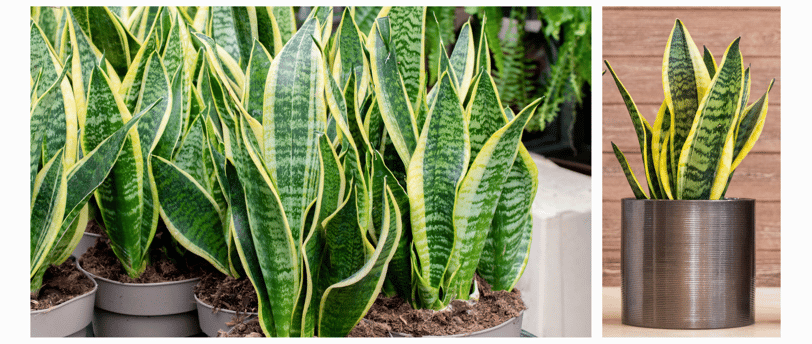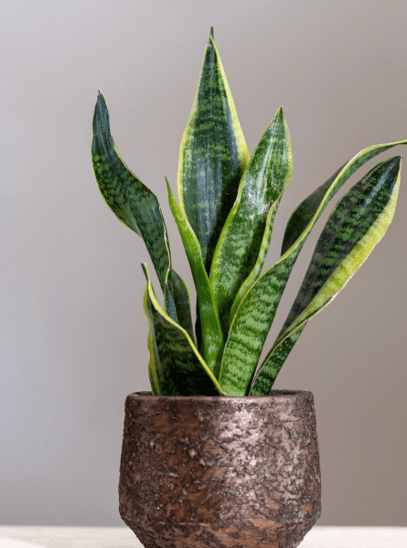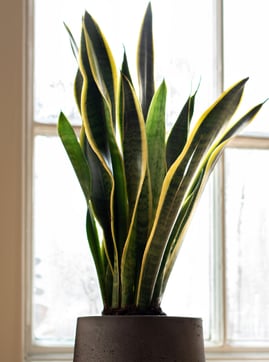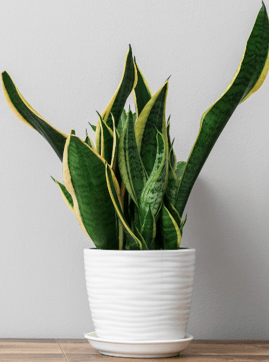Snake Plant, The Perfect Indoor Plant for New York City Living
Sansevieria plants, also known as mother-in-law's tongue or snake plant, have gained great popularity as indoor plants due to their unique characteristics, low maintenance, and decorative appeal. Originating from West Africa, Sansevieria plants have become a favorite choice for both experienced enthusiasts and beginners in plant care.
INDOOR PLANTS
Clara C.
8/9/20233 min read


Sansevieria or Snake Plant
Sansevieria plants stand out for their striking appearance and distinctive characteristics. They have long, upright leaves that are usually green with variegated patterns in yellow or white. The leaves grow in a rosette shape, and their thickness and rigidity resemble the texture of snake skin, hence the name "snake plant." These plants can reach different heights, ranging from a few inches to several feet, depending on the species and variety.
Maintenance: One of the most outstanding qualities of Sansevieria plants is their low maintenance, making them an ideal choice for busy individuals and those with little experience in plant care. Here are some key points to consider for their care:
Lighting: Sansevieria plants are highly adaptable to lighting conditions. They can tolerate both bright indirect light and low light, making them suitable for various spaces in your home or office.
Watering: Sansevieria plants are drought-tolerant and can survive extended periods without water. It is best to allow the soil to completely dry between waterings to avoid overwatering, as they are prone to root rot.
Soil: It is important to use well-draining soil for Sansevieria plants. A regular potting soil mix combined with sand or perlite works well to ensure good drainage.
Temperature and Humidity: Sansevieria plants thrive at average room temperatures ranging from 15°C to 29°C (60°F to 85°F). They can tolerate different humidity levels but prefer moderate humidity.
Decoration and Space Adaptation
Sansevieria plants are incredibly versatile in terms of their decorative appeal and suitability for different environments. Here are some scenarios where Sansevieria plants can enhance the ambiance of a space:
Small Spaces: Sansevieria plants are perfect for compact spaces due to their vertical growth and compact size. They can be placed on shelves, desks, or window sills to add a touch of greenery without taking up much space.
Large Spaces: In larger areas, Sansevieria plants create a visual impact with their tall and striking leaves. They can be used as floor plants to create visual interest, occupy empty corners, or as focal points in spacious rooms.
Low-Light Areas: Sansevieria plants are excellent choices for spaces with limited natural light, such as bathrooms or rooms with north-facing windows. They can tolerate low-light conditions and continue to thrive, adding a touch of green to otherwise dark spaces.
Modern and Contemporary Décor: The sleek and architectural look of Sansevieria plants makes them favorites among those who prefer modern and contemporary interior styles. Their clean lines and vibrant foliage beautifully complement minimalist designs.
Air Purification
Sansevieria plants, in addition to being aesthetically appealing, are also known for their ability to purify indoor air. These plants are recognized for their capacity to filter toxins and release oxygen, making them a popular choice for improving air quality in homes and offices.
Sansevieria plants are particularly efficient in removing volatile organic compounds (VOCs). These compounds are found in many everyday products, such as paints, cleaning products, furniture, carpets, and other synthetic materials. VOCs can have harmful effects on health, such as eye and respiratory tract irritation, headaches, fatigue, and even more serious long-term problems.
The ability of Sansevieria plants to purify the air is due to their photosynthesis process. During photosynthesis, plants absorb carbon dioxide and release oxygen. However, some plants also have the ability to absorb certain chemical compounds present in the air, including VOCs, through their leaves and roots. These compounds are then transformed and broken down into harmless substances for the plant.
In addition to filtering VOCs, Sansevieria plants can also help regulate humidity in the air. They release small amounts of water through their leaves, which can slightly increase the humidity in the surrounding environment.
It is important to note that while Sansevieria plants can contribute to improving indoor air quality, they are not the definitive solution to all air pollution problems. Air purification is a complex process that depends on various factors, such as room size, the number of plants present, and the concentration of pollutants.
To make the most of the air-purifying benefits of Sansevieria plants, it is recommended to maintain a suitable environment for their growth. This includes providing them with the right amount of light, water, and nutrients, as well as regularly cleaning their leaves to remove dust and debris.


Sansevieria plants, also known as mother-in-law's tongue or snake plant, have gained great popularity as indoor plants due to their unique characteristics, low maintenance, and decorative appeal. Originating from West Africa, Sansevieria plants have become a favorite choice for both experienced enthusiasts and beginners in plant care. In this article, we will explore the main features of Sansevieria plants, their care requirements, how they can enhance different spaces, and why they are so well-known.






Subscribe to our newsletter
2025
best indoor plants nyc
All rights reserved
